An attribution model is a set of rules which determines the amount of credit each click gets for conversions. With the use of this model, we can easily understand the role of ad groups and keywords in assisting and completing a conversion.
Attribution model helps in knowing about the users who are searching for a particular product and for how long they have stayed on the website. You can also determine the most effective marketing channel for investment through this tool.
Attribution model can be classified into two categories:
1. Rule based attribution models: Rule based attribution model works on some rules which are pre specified.
2. Algorithmic attribution models: Algorithmic based models are customized models which assigns data driven conversion credits across all touch points.
There are various types of attribution models available on Google Ads:
i) Last click attribution model: It works on a pattern where the last clicked ad gets all the credit for conversions. This is also the default attribution model used by Google Ads. It is very useful in the case of FMCG businesses which accounts least amount of concentration by the buyers.
ii) First click attribution model: This model gives all the credit for conversions for the first clicked ad. It can also be defined that the first clicked ad in conversion path gets all credit for conversion. This model is very useful for those who are new in their business and trying to build their brand.
iii) Linear attribution model: It gives equal credit for conversion in a conversion path to all the ad clicks. This model is useful when interacting with your customers is very important of your business. The companies which provide customer support service can use this model successfully as it will provide all the relevant data.
iv) Data driven attribution model: This model uses algorithm based upon prediction to assign conversion credit to various ad interactions. It actually uses a conversion based on the model of probability. It is very useful when 15000 or more ad clicks are taking place each month.
v) Position based attribution model: This attribution model gives the first clicked ad around 40% of the conversion rate and rest 40% to the last clicked ad. Remaining 20% is distributed among all other ad clicks. If your business model is as such where you give emphasis to first and last customer interaction then you should use this model.
vi) Time decay attribution model: The model gives more credit to the ads which are clicked just around the time of conversion. This can actually be explained like this – if an ad click takes place 7 days before a conversion in a credit distributed using 8 days half life. The ad click recorded 1 day before conversion gets more credit compared to others. This model can be extremely useful if you are running promotional campaigns which are time sensitive. Customer buying behavior can be easily understood by this model.
The steps to follow for using attribution models on Google Ads are mentioned below:
1. Log in to Google Ads and go to the ‘Tools’ section.

2. Under ‘Tools’ menu, select ‘Search attribution’ from ‘Measurement’ section.
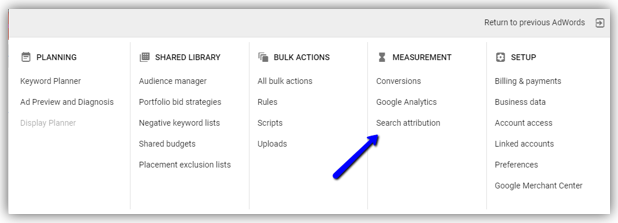
3. After opening ‘Search attribution’. Click on attribution modeling section present on the left side of the page.
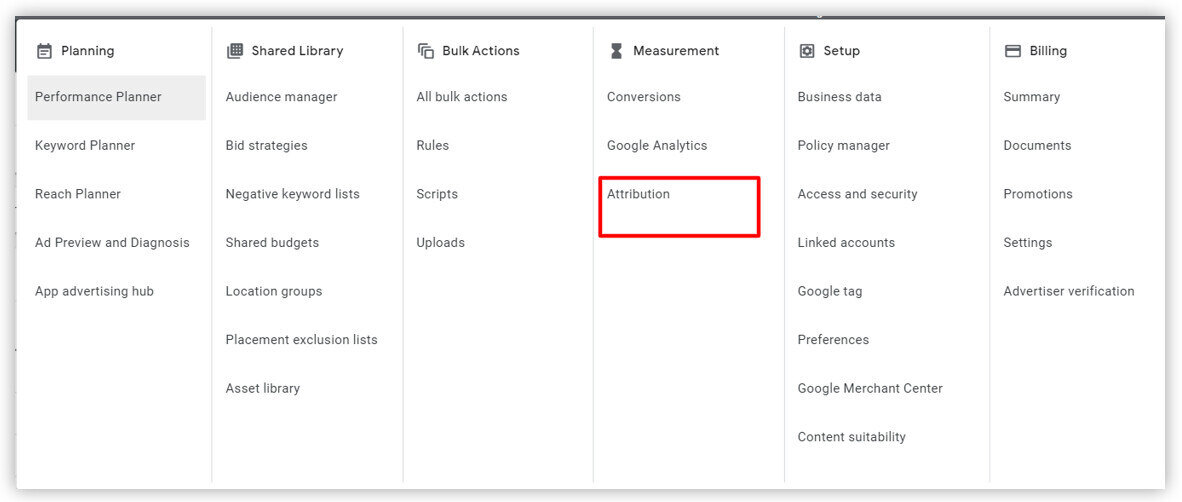
4. Now click on the drop down menu denoted with ‘last click’.
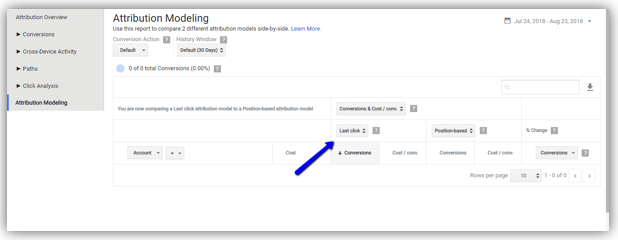
5. Select the attribution model as per your requirement from the drop down menu.
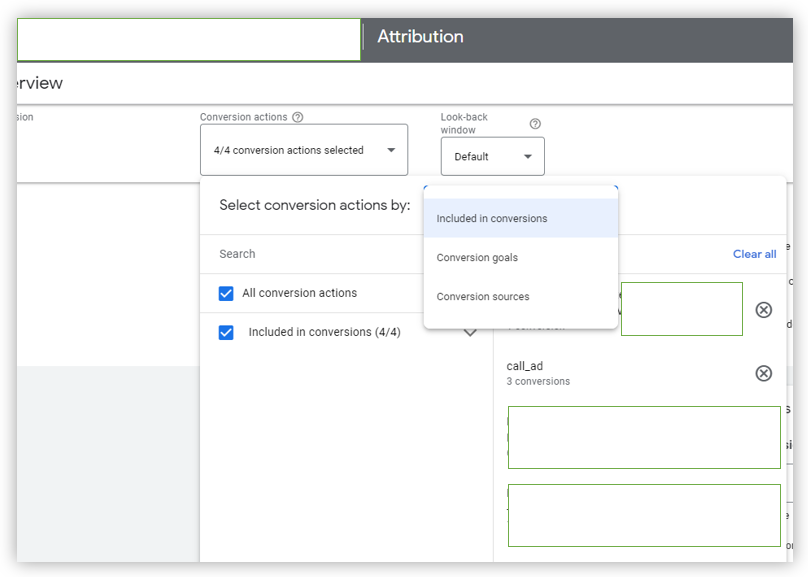
Advantages of using Google attribution model are as follows:
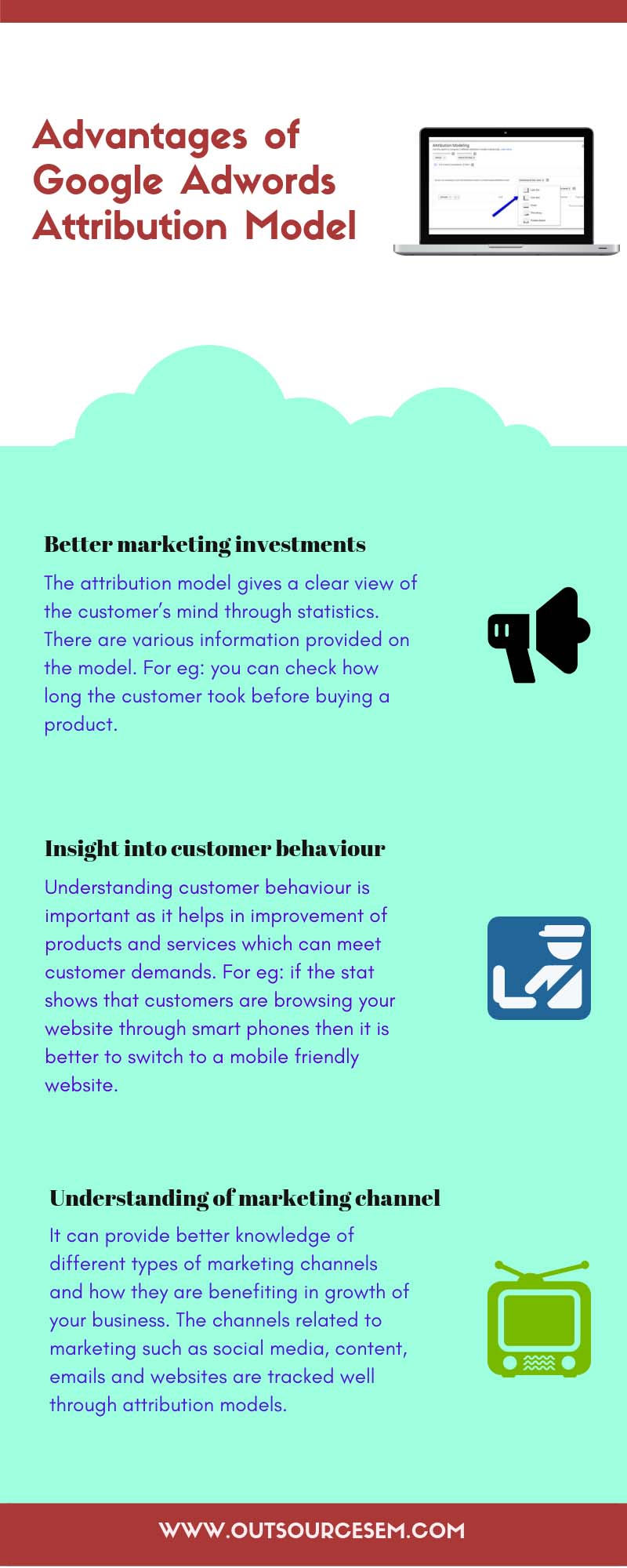
1. Better marketing investments: The attribution model gives a clear view of the customer’s mind through statistics. There are various information provided on the model. For eg: you can check how long the customer took before buying a product. This piece of data can be easily help in better use of your investment to the effective channels and campaigns.
2. Insight into customer behaviour: Understanding customer behaviour is very important as it helps in improvement of products and services which can meet their demands. Customer is the king and delighting them should be the ultimate objective. For eg: if the stat shows that customers are browsing your website through smart phones then it is better to switch to a mobile friendly website or an app rather than being stuck on a traditional website.
3. Understanding of marketing channel: It can provide better knowledge of different types of marketing channels and how they are benefiting in growth of your business. The channels such as social media, content marketing, email marketing and websites are tracked well through this model. It also displays the different platforms of social media which are keeping the audience interested and how the PPC Campaigns are working on them. Conversion reports are displayed which makes it easier in putting more efforts towards best performing networks.
The attribution model works fine but there are certain problems which are encountered during its use. These disadvantages of using Google attribution model are mentioned below:
1. Attributed ROI not correct: Attribution model basically divides the credit for a conversion. It helps in determing on what is working well and where things are going wrong. In reality, the Return on Investment (ROI) is very different. The marketing world works differently. In most businesses, there is already a customer base which is existing.
2. No accountability for offline effects: The offline channel also has a greater impact on digital marketing channels. The paid search is mostly dependent upon the interest of the consumers. There are various factors on which the consumer interest depends upon which includes offline marketing channel as well. So, the attribution model never really tells about the influences of other marketing techniques and promotional activities.
3. No liability for external factors: There are many factors such as pricing and economy which are changing every now and then. They are not taken in to consideration by the attribution model which makes it less effective. The peripheral impact of these factors are more than it is actually thought to be.
There are various tips and tricks which can be applied to use attribution model in a more effective way. Some of them are mentioned below:
1. Choose the model which fits your need: There are various models available for different types of marketers. This can be understood by few examples. Let us take an automobile company here which has a bigger budget. It would like to introduce their latest brands to people whereas a software app company would be more interested in every ad interaction on their app. It is important to choose a model which fits your brand’s marketing goal and effort.
2. Use rule based model if data based doesn’t work: Sometimes it might happen that the model based on data will not give you accurate analysis. In that case, it is better to use rule based model. It is quick and easy to work with, the steps in conversion path are valued in this model, compatible with automated bidding and works on short conversion paths as well.
3. Bidding to your attribution model: The attribution model provides you the true sense of your keywords and bidding can be much easier using this. By using attribution model, you can assign credit for keywords by analysing them. You can check whether your entire account is growing or not.
4. Changing your ads and landing page: Once the search intent of the keyword is known, it is easy to modify the ads and landing pages which can create more benefit as compared to before. Some keywords don’t complete conversions, they only assist them.
5. Look at early influence of keywords: It is recommended to check the keywords which had been influencing the campaign earlier. In some cases, the value provided by the keywords are not properly captured by last click attribution model. There might be some influencing keywords which were paused in the past but can now be useful in conversions.
The attribution reports can be studied and analysed in different ways. If it is done in a proper manner, it would help in maximizing the profit. Some methods used are given below:
1. Be clear in approach: A complex report can sometimes be hard to check as there is lot of data present.You can make things easier by looking after a particular data with precision. For eg: If you want to check on conversions which are there in display advertising, then go to that particular section only.
2. Track meaningful conversions: It is important to think before deciding about the conversion optimization points. If you change the display marketing of a particular conversion it can have an adverse affect on another conversion.
3. Don’t fear failure: The only thing which scares most of the marketers is not being successful. Well, only after a few failures you can know what success truly means. Some users stop optimizing as soon as they see that the campaign is not working. Actually they should identify the problem and do better optimization to resolve it.
4. Focus only on few placements: It is always said that focusing at the bottom level of a particular section will also improve the top level. In this particular case of attribution reports, it is crucial to identify the part of campaign where you want to make the changes and then do it separately one by one.
5. Identify the most meaningful metric: You have to make sure that the correct metric is picked up which is being used across all reports. Things can get a bit confusing if you try to jump from one report to another and focus on different metrics at a single time.
Attribution models for small business:
There are various types of models in attribution. The one which is famously used by small businesses is last click attribution. This type of attribution model helps in knowing when a visitor completed the goal by purchasing a product or service. It is very helpful for business which has lack of resources and it has just started working. Generally small businesses look at avoiding a channel which has high volume and low conversion. The multi channel attribution helps in recognising the same and you can take proper steps to use it accordingly.
Another model is multi channel and the small business owners can utilise it an effective manner. They can easily understand their audience and their intent. It can also assist in going for more referral sites. The website can get developed and grow in a better manner. It will tell you on which referral sites the emphasis should be given more. For eg: In some cases, the social media channel will give better assistance with referral conversions. So, you can maintain your social media page in a better way and get good results.
Conclusion
Attribution Model is for sure a very essential tool currently in the ever growing world of digital marketing. For starters, it can look a bit complex to understand but as you go in to its fine details and usage you will get to know how much helpful it is. It gives a better understanding of the funnels related to multi channel conversions and the value of every particular channel.
Some business owners and marketers are very confused in their strategies and goals which can create trouble when using attribution model. The aim of the paid ad campaign should be known and right model should be used. Be sure and absolutely confident when using the attribution model for your campaign, then only you will achieve better results. As they say, success is a combination of planning, confidence and persistence. All these words are very much applicable for usage of attribution models in a better way. By hiring digital marketing experts you can avail various services like lead generation, carry out PPC report, PPC audit, run search ads, facebook ads, mobile ads for your campaign.Further you can also get web development services, link building, backlink analysis and various kinds of services for your client.
References:
- Which Google Analytics Attribution should you use?
- What search marketers need to know about Google Attribution
